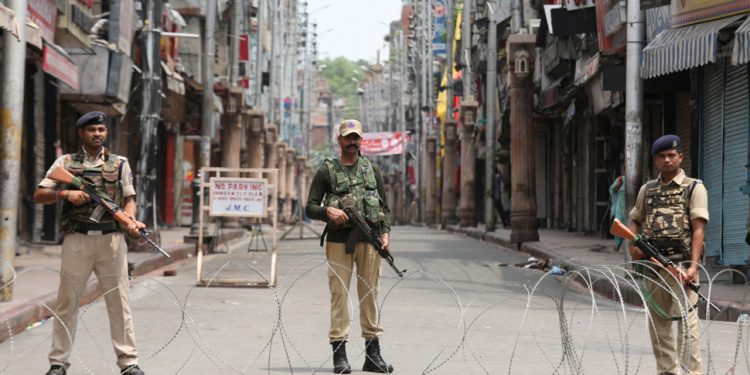Lekhasri Samantsinghar
Now that we will call the erstwhile Jammu and Kashmir state as Union Territories of J&K and Ladakh, the 70-year-old narrative controlled by Congress has changed completely. While Kashmiri parties such as People’s Democratic Party and National Conference are caught in the ‘who moved my cheese’ syndrome, the grand old party with a reluctant dynast as leader was aghast, confused and shocked beyond reaction. The meek lamentations of the Congress old guard were a pathetic display of capitulation before the Modi government’s assertive policies.
The raid of the Pakistani army and armed tribals just after Independence, signing of the Instrument of Accession by Maharaja Hari Singh in October 1947, the unilateral reference to the Security Council and the eventual ceasefire and drawing of LoC are known to all. Then came the backdoor entry of Article 370 through presidential order and two wars before Kashmir became a bilateral issue vide the Shimla Agreement 1972. But Article 370 continued until it was nullified on August 6, 2019, by the Narendra Modi government.
So what has changed? Apart from the status of Jammu and Kashmir, many paradigms have been razed to the ground. For example, the doctrine that a limited escalation between two nuclear powers is bound to end in a nuke exchange ending the world. That there is no way of tackling China other than by cowering and capitulating before it. That one cannot give a conventional response across the border without risking a nuclear strike. That the world community would make sure under pressure from USA and China that India behaves (maintains status quo).
These narratives propagated by the beneficiaries of the Kashmiri loot and traders of terror politics have been keeping the nation tethered to a policy long lost to inaction. Until someone called the bluff. Now the bullies have become ranting supplicants, the left liberals crying end of democracy and Pakistan running to its Granddad crying foul.
Predictably, post nullification, the national mood was one of unity and unanimity and even the Congress Young Turks supported the decision. The results of Security Council consultations were at worst mute and at best an endorsement. The end game is yet to unfold. The restriction in the Valley is still on and stones and brickbats are being gathered. But whatever way the events unfold, one thing is certain. India has demonstratively moved its foreign policy doctrine from a soft state to a hard power with whom one would be cautious while indulging in adventurism.
Another parallel story which culminated in the abrogation of Article 370 started almost immediately after Kashmir was given special status. Dr Shyamaprasad Mukherjee’s march into Kashmir in 1953 without a permit and his subsequent death in the Valley made the movement of fully integrating J&K with India a cornerstone of BJP’s politics. Prime Minister Narendra Modi had himself unfurled the Tricolour at Lal Chowk in 1992 at the height of militancy. While the Congress blatantly kept on rigging popular mandate in Kashmir, a vested interest political class solely based on Article 370 thrived. All shades of political colour professing from full freedom to soft religious fanaticism to an autonomous Kashmir kept growing, feeding on cross border terrorism and central grants.
The people of Kashmir suffered, especially the youth. Article 35A effectively kept investment out and youth were radicalised with foreign funding. The political narrative willingly played into the hands of Pakistan and China, which have domestic political compulsions to keep the state burning. Gradually, with restrictions gone and normal political process beginning, one expects investment to pick up and growth to happen. One major beneficiary of this would be hitherto neglected Ladakh, which had been demanding status of a Union Territory for long.
With the rest of India solidly behind the Kashmiris, the forthcoming narrative would be integration and politics of development and hopefully a ghar wapsi for Kashmiri Pandits. A new dawn in a new Kashmir. This is new India.
The writer is former assistant professor, Ravenshaw University, and state secretary, BJP Odisha.






































